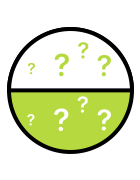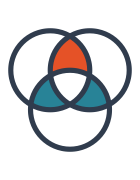RESOURCES
Becoming Great Questioners
Becoming a great questioner is a key skill for successfully identifying and solving challenges. The better we are at asking questions, the better our learning. As we learn more, we gain deeper insights that can be used to develop meaningful and sustainable solutions. If we do not take time to ask questions, or if we are not willing to ask the difficult questions, there is a good chance we will miss important information. This Guiding Resource provides some simple tips for becoming great questioners.

Relax
Asking questions is natural. Spend time around any young child, and you will see gifted questioners. They may be a bit undisciplined, but they are prolific. As we get older, we tend to lose this enthusiasm due to external influences, self-doubts, and social filters. To become a better questioner, you will need to relax and realize that it is natural.

Types of Questions
Think about the types of questions you are asking. Over the surface questions typically include when, what, where, how, and who. They provide background but are usually easily answerable and only provide a “surface” level exploration of the subject matter. Questions that start with “Why'” “What if,” or “How come” can allow you to go further under the surface to understand underlying motivations, philosophies, and ideas.

Practice Makes Perfect
Like with any skill or tool, the more we practice, the better we get. When you are learning, work on writing down the questions you feel are essential. As you are taking a walk, reading a book, or doing chores, think of as many questions as you can. Make sure you are trying all the different types of problems.

Ask Lots of Questions!
The more questions you ask, the better! No question is a “dumb” question. A natural bias is to only ask the questions we want to answer. These include the ones we feel comfortable with, know the answers to, or those that guide us to a preconceived solution. By pushing our limits we will discover interesting information.

Categorize!
Once you have a sizable and diverse set of initial questions, the next step is to consolidate similar questions and develop categories of questions. By creating categories we will find connections and more efficient ways to answer our questions. Creating categories is a critical step, as these decisions will shape the learning journey moving forward.

Prioritize!
As categories solidify, the questions can be sorted and prioritized (“must-know” questions at the top, “good to know” at the bottom). The result is a set of categories that contain prioritized sets of questions. This is especially important if you have tight time constraints for the Challenge.
